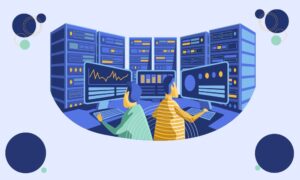Data visualization is a significant trend in information technology. It uses visual representations to process large quantities of information, highlight structures, and reveal correlations that would be difficult to observe using tables alone.
Software visualization provides a way to look at source code for a program in real-time, highlighting the execution of queues or individual blocks of code that may be taking an unusually long time. It’s also used to display data trends over time.
Visualizations Boost Decision-Making
Visualization software processes and presents data in a pictorial or graphic format. The software typically offers a range of formats designed for specific industry needs, such as charts and graphs, flow diagrams, and geographical maps. Many of these solutions provide an organized dashboard where users can interact with the visuals and customize their settings.
As more business data becomes available, accessing the information most critical to decision-making can be challenging. Traditional methods of presenting data, such as in a spreadsheet or plain text, can be overwhelming and confusing. The best 3D visualization software simplifies this process by cleaning and organizing the data. It also allows users to scan the data and better understand what it means quickly.
When deciding on a visualization solution, it is essential to consider the type of information you want to visualize and how your audience will process it. You should then select a visual that conveys this information as simply and effectively as possible for your audience. For example, a chart might help show trends over time but would not be ideal for comparing values such as cardinality (the percentage of unique items within a column). A graph depicting natural frequencies could be better since viewers can make perceptual comparisons rather than perform mathematical calculations in their working memory.
Visualizations Increase Efficiency
Visualization software allows you to take data sets and represent them uniquely. The result is that they become more accessible to understand and analyze. This can make your business more efficient and effective as you work to streamline processes, define best practices, and increase productivity.
You must decide what information you want to represent to create a visualization. The critical factors in this decision include the number of columns, cardinality (the percentage of unique values in a set), and whether you need to show all or just a subset of data. Then, choose an appropriate visualization technique that suits your needs. This has many options, including graphs, charts, and heat maps.
Visualizations Create an Immersive Experience
Visualization tools make complicated data relationships visible and more accessible to understand. These visual information displays facilitate decision-making, accelerate project cycles, and foster team collaboration.
For example, engineers using visualization technologies can identify potential issues, explore alternative design options, and optimize performance before physical prototyping. This reduces costs, speeds up development cycles, and fosters innovation.
Moreover, they can experiment with unconventional ideas directly on the screen. In such cases, a simple change to a specific value – even the thickness of a wall or material in a single location – can have unpredictable consequences. This can be especially true if there are many variables to consider. Having the ability to test these changes and see their effects on the whole system saves time and money, as well as avoids costly mistakes and unnecessary risks.
Dozens of software applications can help create visualizations. Some are free and easy to use, while others are more advanced and require a subscription.
Another form of software visualization is the ability to view source code. Through color coding and abstraction, massive amounts of code can be displayed simultaneously, making it easier to identify what’s being used for what purpose. In addition, some visualization software can highlight parts of code that may be difficult to read or are likely error-prone.
Visualizations Increase Sales
As the number of online customers grows, boosting sales becomes increasingly essential. Businesses increasingly leverage 3D visualization software and augmented reality tools to boost customer confidence and help them make the right purchase. In turn, this increases customer retention and sales growth.
Data visualizations work by tapping into existing circuitry in the brain to decode visual images as quickly and efficiently as written language. This allows businesses to see insights they may have missed and create actionable items to increase sales.
For example, a business can use data visualization to identify specific trends, such as declining sales of certain products. Then, it can correlate those declines with actual item sales to discover the root cause.
Other types of software visualization include the reverse-engineering of a program using abstract representations of how code is executed. This can help developers spot performance spikes or areas receiving exceptionally high input activity. This type of visualization can also show how code interacts with other components, making it easier to detect security flaws.
When used correctly, big data visualization solutions equip decision-makers with the information they need to drive business direction and growth. The key is to know your audience and ensure that the visualizations you choose are clear, concise, and relevant to their interests.

















